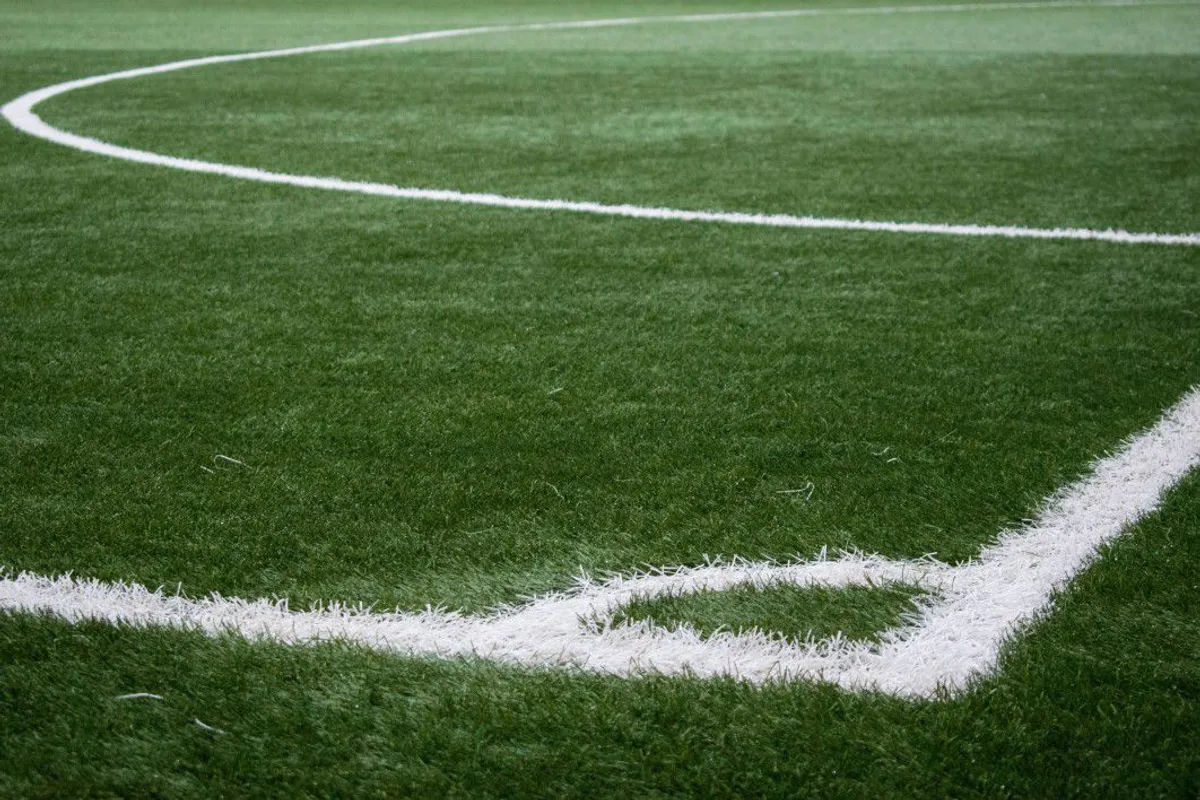
Tribute to Attribution — Attribution theory in sports psychology
Exploring how athletes explain their successes and failures, and how these explanations impact future performance, motivation, and mental resilience.
Why We Win and Why We Lose: Attribution Theory in Sports Psychology
The final whistle blows. A match ends. Within seconds, the explanations begin: “The referee was against us,” “I didn’t get enough sleep last night,” “We wanted it more,” “I’ve been training for this moment all year.” These explanations—whether offered in post-game interviews, team huddles, or simply in an athlete’s own mind—are far more than casual observations. They represent a psychological process that profoundly influences how athletes experience competition, process outcomes, and approach future challenges.
This process, known as attribution, refers to how we explain the causes of events and behaviors—particularly our successes and failures. In sports, these attributions can mean the difference between resilience and surrender, between learning from defeat and being crushed by it, between building on victory and becoming complacent.
The Architecture of Explanation: Attribution Theory Basics
Attribution theory, pioneered by psychologist Fritz Heider and later expanded by Bernard Weiner, examines how individuals interpret events and how these interpretations affect their thinking and behavior. Within sports psychology, attribution theory offers a framework for understanding how athletes explain performance outcomes and how these explanations affect future motivation, emotion, and behavior.
According to Weiner’s model, attributions vary along three critical dimensions:
1. Locus of Causality: Internal vs. External
This dimension concerns whether the athlete attributes outcomes to factors within themselves or to external forces:
Internal attributions place the cause within the individual:
- “I won because of my superior preparation”
- “I lost because I didn’t concentrate well enough”
External attributions place the cause in the environment:
- “We won because the weather conditions favored our playing style”
- “I lost because the referee made several bad calls”
2. Stability: Stable vs. Unstable
This dimension addresses whether the attributed cause is perceived as permanent or temporary:
Stable attributions point to persistent, unchanging factors:
- “I always perform well under pressure”
- “I’ve never been able to execute that particular skill”
Unstable attributions identify temporary, fluctuating factors:
- “My energy level was particularly high today”
- “I had an off day”
3. Controllability: Controllable vs. Uncontrollable
This dimension focuses on whether the athlete believes they could influence the cause:
Controllable attributions emphasize factors the athlete can modify:
- “My technical execution was flawless because I’ve been working on it daily”
- “I lost focus during critical moments”
Uncontrollable attributions highlight factors beyond the athlete’s influence:
- “The unexpected equipment failure cost me the match”
- “I have a natural gift for this sport”
The combination of these dimensions creates eight possible attribution patterns, each with distinct psychological implications. For instance, attributing failure to internal, stable, and uncontrollable factors (“I’m just not naturally talented enough”) creates very different expectations and emotions than attributing the same outcome to internal, unstable, and controllable factors (“I didn’t prepare adequately for this specific opponent”).
The Attributional Tendencies of Athletes
Research has identified several common patterns in how athletes explain their performances:
The Self-Serving Bias: Protecting the Athletic Ego
One of the most consistent findings in attribution research is the self-serving bias—the tendency to attribute success to internal factors and failure to external factors. For athletes, this might manifest as:
- After victory: “My dedication to training and mental toughness made the difference”
- After defeat: “The playing conditions were terrible” or “The officiating was biased”
This pattern serves a psychological protective function, maintaining self-esteem and confidence. However, when taken to extremes, it can prevent athletes from recognizing areas needing improvement and hinder skill development.
Learned Helplessness vs. Mastery Orientation
Athletes who consistently attribute failures to internal, stable, and uncontrollable causes (such as lack of natural ability) tend to develop what psychologists call learned helplessness—a belief that they cannot influence outcomes regardless of their efforts. This leads to decreased motivation, reduced persistence, and eventually, performance declines or withdrawal from the sport.
In contrast, athletes with a mastery orientation tend to attribute outcomes—especially failures—to internal, unstable, and controllable factors like effort or strategy. This pattern fosters resilience, encourages learning from setbacks, and promotes continued engagement with challenges.
Team vs. Individual Attributions
Attribution patterns often differ between team and individual sports. In team settings, the “diffusion of responsibility” can lead to more complex attribution patterns:
- Credit for success may be widely shared or concentrated on star players
- Blame for failure may focus on specific individuals (“scapegoating”) or disperse across the team
The cohesiveness of the team significantly influences these patterns. Highly cohesive teams tend to share both credit and blame more equally, while less cohesive teams often exhibit more self-serving and divisive attribution patterns.
Cultural Differences in Attribution Styles
Fascinating cross-cultural research reveals that attribution styles are not universal but shaped by cultural values and norms. Western athletes, particularly from individualistic societies like the United States, typically demonstrate stronger self-serving biases than athletes from collectivist cultures like Japan or China.
Athletes from collectivist cultures often:
- Show greater modesty in attributing success, emphasizing team contributions, coaching, or even luck
- Take more personal responsibility for failures, even in team contexts
- Place higher emphasis on effort rather than natural ability
These cultural differences highlight how deeply our explanatory styles are influenced by broader social contexts and values—a reminder that attribution patterns are learned rather than innate.
The Consequences of Attribution: How Explanations Shape Future Performance
Attributions are far more than post-hoc analyses; they actively shape an athlete’s psychological approach to future competitions through several mechanisms:
Emotional Impact
Different attribution patterns trigger distinct emotional responses:
- Attributing failure to lack of effort (internal, unstable, controllable) typically produces guilt and regret
- Attributing failure to lack of ability (internal, stable, uncontrollable) often leads to shame and reduced self-esteem
- Attributing success to personal effort creates pride and satisfaction
- Attributing success to luck may diminish feelings of accomplishment
These emotional consequences can linger long after the competition ends, affecting training motivation and pre-competition mindset.
Expectancy Effects
How athletes explain past performances strongly influences their expectations for future events:
- Stable attributions for success (“I won because I’m naturally gifted”) create expectations for continued success
- Stable attributions for failure (“I lost because I’m just not coordinated enough for this sport”) generate expectations of continued failure
- Unstable attributions (“Today was just an off day”) create less certainty about future outcomes
These expectations become self-fulfilling prophecies, affecting everything from pre-performance anxiety to effort investment.
Behavioral Persistence
Perhaps most critically, attributions influence an athlete’s willingness to persist through challenges:
- Athletes who attribute failures to controllable factors tend to demonstrate greater persistence
- Those who attribute failures to uncontrollable factors are more likely to withdraw effort or quit entirely
- Athletes who see success as coming from internal, controllable factors typically maintain higher motivation during training
Reattribution Training: Changing Explanatory Styles
Given the profound impact of attributions on performance, sports psychologists have developed reattribution training interventions to help athletes develop more adaptive explanatory styles. These programs typically focus on shifting athletes away from counterproductive patterns (especially internal, stable, uncontrollable attributions for failure) toward more constructive approaches.
Effective reattribution training includes:
1. Attribution Awareness
Athletes first learn to recognize their own explanatory patterns through techniques such as:
- Performance journals documenting not just outcomes but explanations
- Video analysis of post-competition interviews and comments
- Guided reflection with coaches or sport psychologists
2. Challenging Dysfunctional Attributions
Once aware of their patterns, athletes learn to question attributions that undermine motivation and learning:
- Examining evidence that contradicts limiting explanations
- Considering alternative interpretations of performance outcomes
- Identifying overgeneralizations and absolute statements (“I always choke in big games”)
3. Developing Functional Attribution Alternatives
Finally, athletes practice constructing more adaptive explanations, particularly those that:
- Acknowledge personal responsibility without harsh self-judgment
- Recognize controllable factors that can be addressed through training
- Maintain a balanced perspective on external factors
Research shows that athletes who undergo reattribution training typically demonstrate improvements in motivation, emotional responses to setbacks, and ultimately performance outcomes.
Attribution in Coaching: Shaping Athletes’ Explanatory Styles
Coaches play a pivotal role in shaping how athletes explain their performances. Their feedback, both explicit and implicit, establishes attribution patterns that athletes often internalize:
- A coach who consistently attributes team losses to lack of effort (“You didn’t want it enough today”) promotes internal, controllable attributions
- One who frequently blames officials or conditions (“We would have won with fair officiating”) models external, uncontrollable attributions
- A coach who emphasizes development (“Your technique is improving, but we need to work on consistency”) encourages process-focused, controllable attributions
Effective coaches understand this influence and deliberately promote attributional styles that foster learning, resilience, and appropriate accountability. They recognize that helping athletes develop productive explanatory patterns may be as important as teaching technical skills.
Constructive Attribution Coaching Includes:
- Emphasizing specific, changeable aspects of performance rather than global judgments
- Balancing acknowledgment of external factors with focus on controllable elements
- Avoiding attributions to fixed ability, especially with younger athletes
- Modeling healthy attribution patterns in their own explanations of team performances
Real-World Applications: Attribution Theory in Action
Attribution theory offers practical applications across numerous sporting contexts:
For Individual Athletes:
- Performance Review Process: Structuring post-competition analysis to identify controllable factors for improvement rather than fixating on uncontrollable elements
- Pre-competition Mental Preparation: Recalling past successes with appropriate internal attributions to build confidence
- Slump-Breaking Strategies: Reframing extended performance declines as resulting from specific, changeable factors rather than permanent limitations
For Teams:
- Team Debriefs: Establishing protocols that promote balanced, learning-focused attributions rather than blame or defensiveness
- Leadership Development: Teaching team captains to model productive attribution patterns that maintain accountability while preserving team cohesion
- Culture Building: Cultivating collective responsibility for both successes and failures
For Coaches:
- Feedback Frameworks: Structuring feedback to emphasize specific, controllable aspects of performance
- Developmental Messaging: Framing abilities as trainable rather than fixed, especially with younger athletes
- Parent Education: Helping parents understand how their attributional feedback affects their children’s motivation and persistence
Conclusion: The Stories We Tell Matter
The explanations athletes give for their performances are far more than post-game observations—they’re powerful psychological forces that shape future experiences. How we interpret success and failure determines whether we approach our next challenge with confidence or doubt, whether we see setbacks as opportunities for growth or confirming our limitations, and ultimately whether we persist toward mastery or withdraw from challenges.
By understanding attribution theory, athletes gain a crucial form of mental literacy—the ability to recognize and reshape the narratives they construct about their performances. This awareness allows them to develop explanatory styles that serve their development, protect their well-being, and maximize their potential.
For as powerful as physical training may be, the explanations we embrace might be equally instrumental in determining athletic outcomes. In sports, as in life, the stories we tell ourselves about why we succeed and why we fail help determine whether we’ll persist long enough to ultimately triumph.
